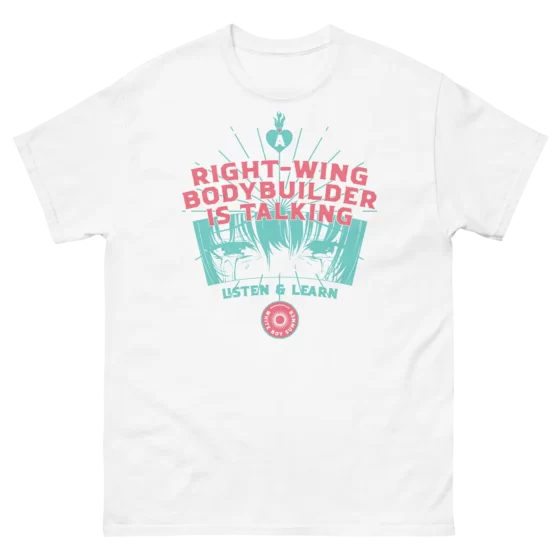Walking Austin, pt.5
Where can a person live like a human being in Austin? I insist that my ennui is founded in a cold and dispassionate reality, and I will not accept criticism for facing the dark truth, though neither will I deny the sliver of orange light that comes from under a nearly closed door.
Mueller might be an example of building nobly in a modern American city. No modern construction in Austin receives an A grade, not because everything I see is so profoundly ugly, but because I am comparing it to the unimaginable beauty of the neoclassical age, with its ornateness, spires, ambition, and higher symbolism. I have spoken before about the meaning of ornamentation and quality construction material. And how the lack of these things are corrosive to the health and wellbeing of modern man. However, if there is a new development in New Austin that comes closest to achieving an honest livable environment, it is the Mueller neighborhood in the northeast.
At the center of the neighborhood there is a park, a pond surrounded by white birch trees, and the children are playing. A retaining wall of red stone lines the west bank of the water, and in the spring, the white cherry blossoms and purple lavender fall and cover the grassy knolls. There is something frankly Japanese about the place. Mueller is a modern development to be sure. But it seems to be a modern development with a shred of proper self-consciousness. Its planners seemed to have an idea of how modernism has gone too far. Where there was once only grey, in Mueller, there is now color—crimson, evergreen, sun fire, and sky.
This district of nearly 2,000 units consists of several different types of housing, from mega complex apartments to rows of condominiums, and streets lined with individual family homes. The district is complete with movie theater, shopping center, grocery store, and various corporate headquarters, each given their own sector of the total development. There is still this compartmentalization of life, which I loathe. The area plays with this modern tech trope of a city within a city. The work from home elite could spend entire years within Mueller, without ever having to venture into wider Austin.
In a state like Texas, most developments succumb to the bigger is better ideology. But I can’t help but be reminded of my pal Dunbar. Dunbar observed that human beings are hardwired to live in communities of around 250 people. And though this is impossible now, all urban design should be slanted towards giving one this psychological impression. Closeness leads to cohesion and is accompanied by feelings of love and ownership. A man feels no closer to any structure than he does his own home, and therefore in all possible ways, every living structure should attempt to achieve closeness. And as I have foreshadowed, one does that though the uniqueness of individual homes, even though they exist within a singular architectural trope. For instance: how the Empire State and Chrisler buildings in New York City are individually recognizable structures that draw from the same cultural soul.
Mueller at times fails to enact this uniqueness, but in several places, it begins to achieve it. On Camacho street there are rows of homes that remind me of New York City brownstones. They are identical in structure though of different color, and what they lack in uniqueness they make up for in closeness. Standing before the row, I have a unique warm feeling, as if I were within some place, not merely looking at some-thing. Conversely, I get a detached experience standing in front of most suburban houses in the U.S—beige carbon copies. I lived in one of these once. Years went by without seeing my closest neighbor. This could never happen here. These people are turned towards each other. The porches of the brownstones are close enough that neighbors can speak to each other without ever raising their voice. I don’t know why, but this raised voice distance barrier seems to be very socially important.
Turning people toward each other is a defining characteristic of a healthy neighborhood. It promotes community and solidarity in the way that the old European cities did, by focusing districts on a central point. Paris for instance is an interconnected web of streets with neighborhoods organized around a central point. Contrast that to an American subdivision which winds aimlessly and spills out errantly into the urban sprawl, taking residents away from each other. A circular grid which arrives at a central point, points human beings towards each other, forcing them to see each other, forcing each to view their own existence in reference to the lives happening round them—unisolated— underacinated.
In many Mueller homes there are columns on the porches. Not nearly as ornate as the Classical or Gothic, but distinctly unmodern. There is a railing with a decorative nob, a brick facade laid out in ornamental patterns, and what is perhaps most purely traditional, are the trees which line the boulevards—white birch, fully grown in neat and even rows, giving the neighborhood a decisive and natural quality. I pass a house of lavender, next golden-yellow, and then a home of evergreen. This block is sparred the dreary beige that has been forced upon modern western man. These little artistic touches mean so much and cost so little. When a society fails to achieve the things which require great vision and discipline but little cost in dollars, it is not long for the world.
I see a return of contrast here. These houses utilize it in a way that has been absent in the prior developments where I have walked. I continue down the street and see a blue door set against a brown home, a brown door against an orange home, a red door on a white home. These contrasting colors give the homes a depth and uniqueness. I pass a porch, and within the web of the iron railings is a diamond pattern. I am enthralled and livened by these enchantments. I have only managed to bear life by cultivating these little details.
This uniqueness and detail is not merely an aesthetic fancy. It seeds a feeling of ownership and self-respect within the people who live here. In the ornate display they see a uniqueness to their experience—they are worth the thought of the man who crafted the railing and planted the beautiful trees of this boulevard. Indeed, they are worth that extra effort. Modernism sends another message: you are interchangeable, you are a cost/benefit analysis. Take the colors that are cheapest and most efficient. That is what you are: a leak of energy.
Mueller is dotted by little centers, parks, pools, places of gathering, and the grid like pattern stretches out from these communal points. No house has the same exact landscaping, but all are well tended displays of arborism. I pass a home that has opted for a hedge heavy approach, another has a collection of lilac trees which give shade to the sidewalk, another still is a mixture of rose bushes and full green hedges. The closeness of the buildings allows for contrast in the eye. There are different trees, different plants, and pottery with a single frame of vision. It gives the walk down the avenue the feeling of being within a forest of plants and stone which live in harmony with each other.
Sadly there is an unwelcome contrast within the Mueller district that I must note. I draw my attention to the difference in structures that line one of the main arteries of the community down Berkman drive. At Philomena I see a complex of 10 units of space barn modernism, and only a single block away and across the street (within sight) is the nuevo-farmhouse that I have previously described. Further down on the corner of Robert Browning and Berkman, we again return to cold gray motifs of modernism. It is the type of contrast which takes and distracts and disenchants, and does not vivify, enhance, or entrance. How are these different souls expected to cohabitate?
It’s clear that in the creation and permitting of Mueller, there was a fracturing of visions. I would like to draw a comparison between the schizophrenic vibe of Berkman and the visionary cohesion of the Comacho neighborhood. In Camancho there is a closeness and tightness where we see that beautiful dance between Fascism and Anarchy. It is here where one is both a part of their community and individually themselves—the celestial position carved out for man.
The homes of a neighborhood or buildings of a district—any unit of community—should be s different instruments which play the same song. Mueller, however, taken as a whole, despite its spots of cohesion, is spiritually fractured. The different organs of Mueller are not playing different songs, but completely different genres. And such is the way of 21st century development thus far, where some segments are created at the behest of artistic vision, and others beneath the yoke of economic conservation. Example: The difference between Camacho and the spiritually modernist Berkman Ave.
The origins of space barn are anti- traditionalist in form, but its modern utilization by developers might in some cases be a purely economic decision. This makes me wonder: did the architects of the late 20th century truly believe in their doctrine of aesthetic minimalism? Or did they merely give academic justification for the economic desire to build cheaper structures? Would it not have been convenient—to hide the ripped spiritual seems of western society behind the American love for change and the technological future?
The apartment megacomplex is a purely economic decision made only possible in an environment of spiritual ambivalence. You can see so clearly, if you fully open your eyes and at the same time, your heart, what buildings were visions of the soul, or conspiracies of the purse. What I seek is a kinship of the artist and merchant instincts. What you see in spacebarn modernism is a complete absence of artistry, and the absolute domination of the mercantile ethic of profit over human health. In the modern west economic force stands tall and stomps its feet across the Earth. Capitalism is a powerful horse when it’s pulling the chariot of a soul. With no soul, that horse is a wild and aimless animal, likely to do as much harm as good.
All the problems that people observe in capitalism are in fact the problems of spiritual ambivalence. Why does capitalism seem to work right up until the year 1970? The 60’s mark the departure of the ethical noblesse oblige and goodwill between men.
I’ve noticed that a man with religious moral conviction tends to imbue his ethic into everything he does—his business is subservient to his persona. A man with only tangential moral “opinions” tends to easily compartmentalize his business from his morals. In this way modern man feels absolved of all morality in the economic context. Thus he “does his job.” And feels no moral qualm about his effect upon the world, even if that effect is great ugliness and oppression.
As a parallel phenomenon, we have witnessed another compartmentalization—that between our business elite and our cultural elite, a fracturing of which we have all paid dearly for. Our business and cultural elite were once more effective on one another. Meaning, you would rarely find a business magnet that was not at least aware of the fine arts and its concepts. Thus, even the men of industry who built our physical world were imbued with a respect and desire for aesthetic beauty. This is no more. Like a communistic selection society, our business minded pupils and artistically minded pupils are siphoned away from each other at an early age. Thus, the artist knows nothing of the economic world, and often, the businessman knows nothing of the soul. The cost of this segregation it is hard to truly know.
***
What we see in developments like Mueller, is the opportunity to re-marry the mind and the soul—to have the mind of dollars and cents return to its rightful place as servant of a higher cause, and to return culture to its rightful place on the throne of society. I demand that leaders be quiet on matters of GDP while their culture drastically decays. Mueller represents possibility, a throughness, not a backness, not a luddite movement, but a reconciliation between estranged allies—business and philosophy—a reunification of man with himself.
Whenever I see architecture that is all mind and no soul, I have an urge to burn it down—to destroy it, so that something human can take its place. A true cultural elite would understand that to truly love the poor, would be to ensure that they lived dignified lives in beautiful places. So much of underclass ennui must be found in unnatural lives lived in gray and cold plasticity. What else could explain how the impoverished of the 3rd world seem so much happier than the working class of the first? Though the poor strive and struggle against nature’s element, they live beneath sky, among stone and grass. There’s something about waking up to the sunrise, surrounded by your family which insulates the soul from bodily trouble.
It should always be remembered that a wealthy man can be made sick by being forced to live in plastic grayness. This should always be remembered. If there is one thing which I wish this writing to mean, it is that when we create, we should always ask what psychological resonance our creation has? What does our work say about our own state of being? I am seeking a reconnection between man’s soul and his creation. Man should not and in fact cannot be divorced from his environment—his environment is an artifact of his own soul and will.
































